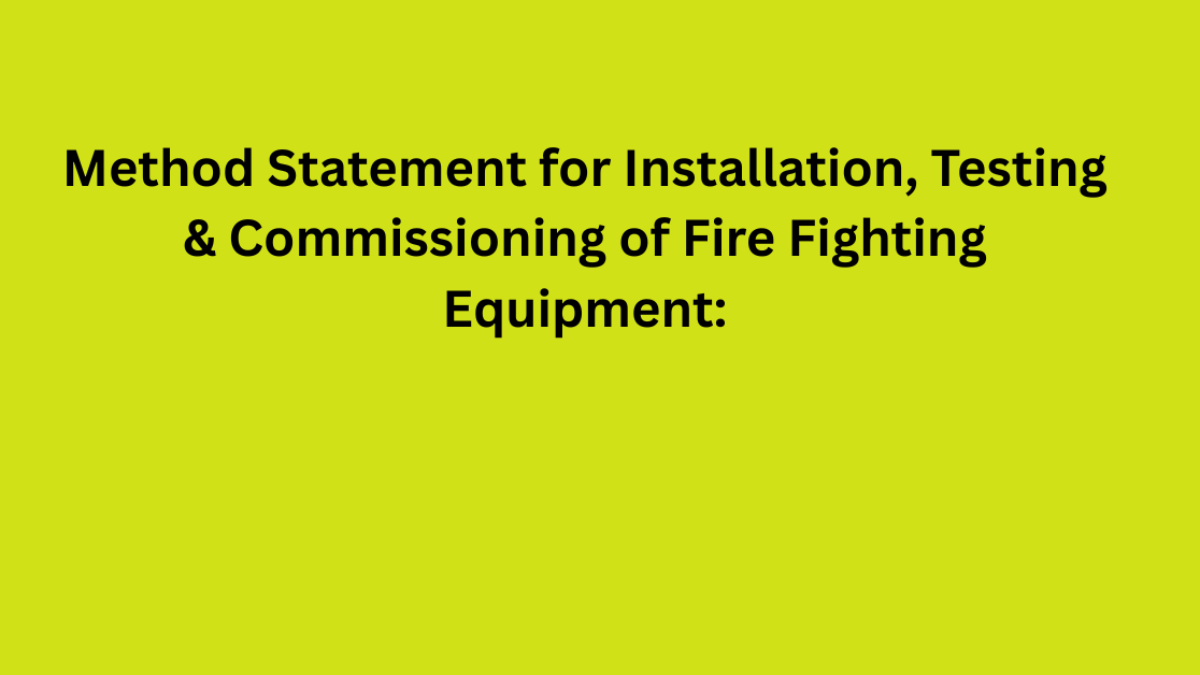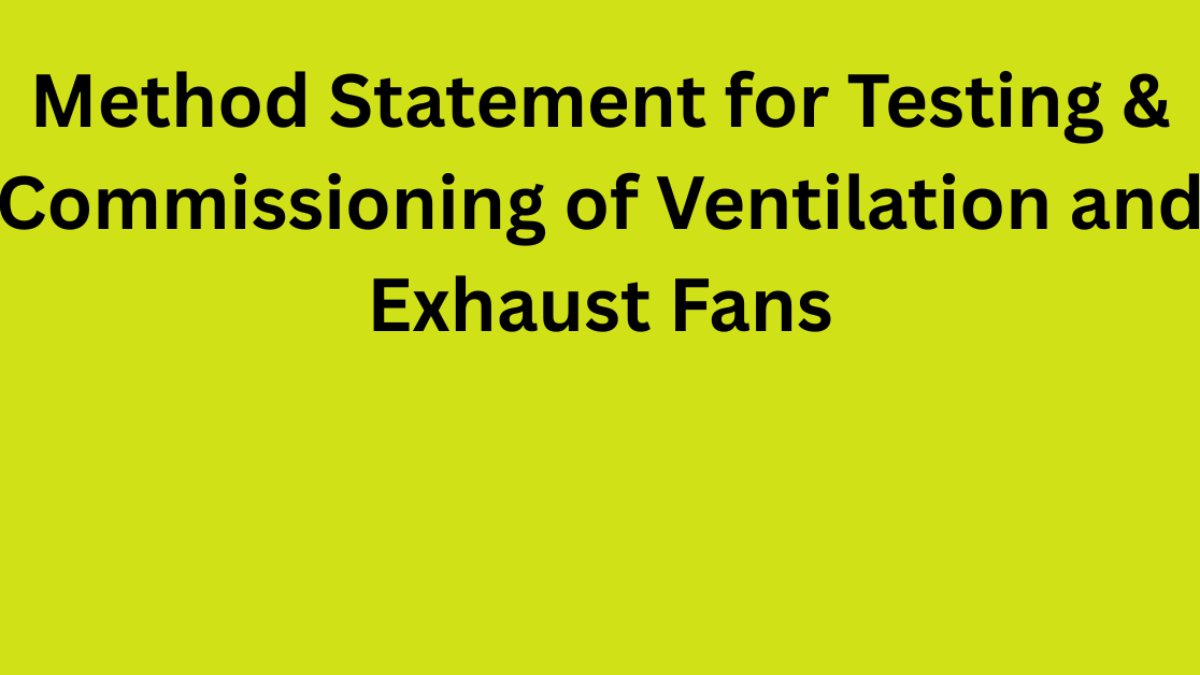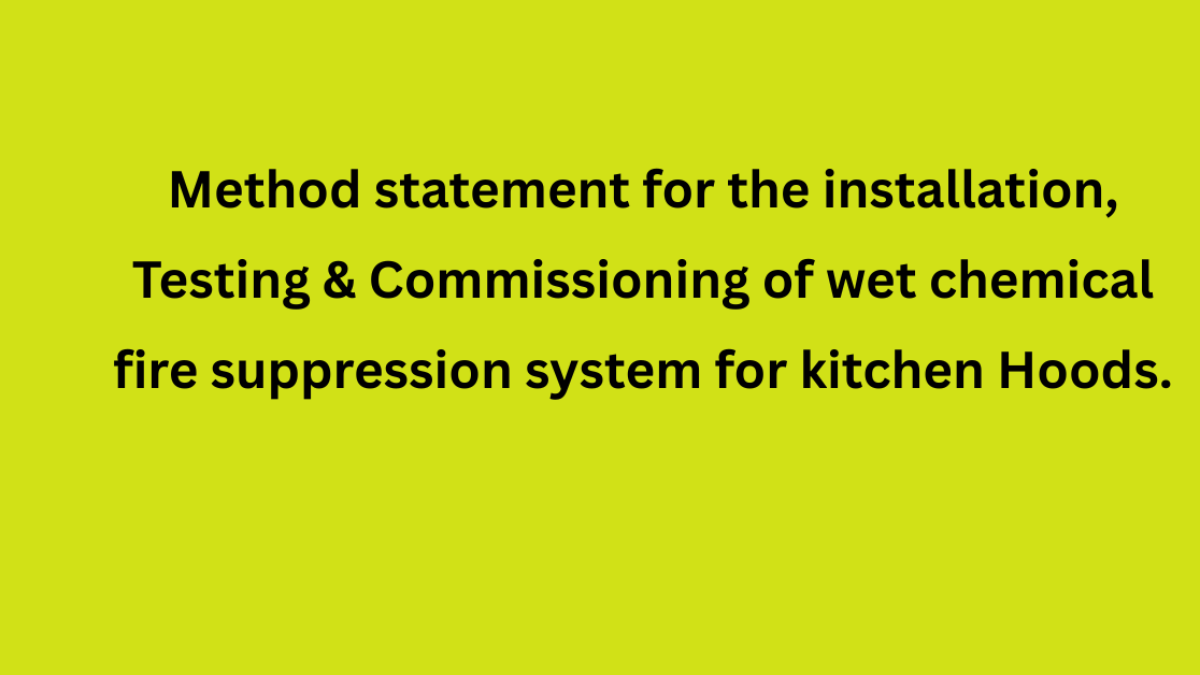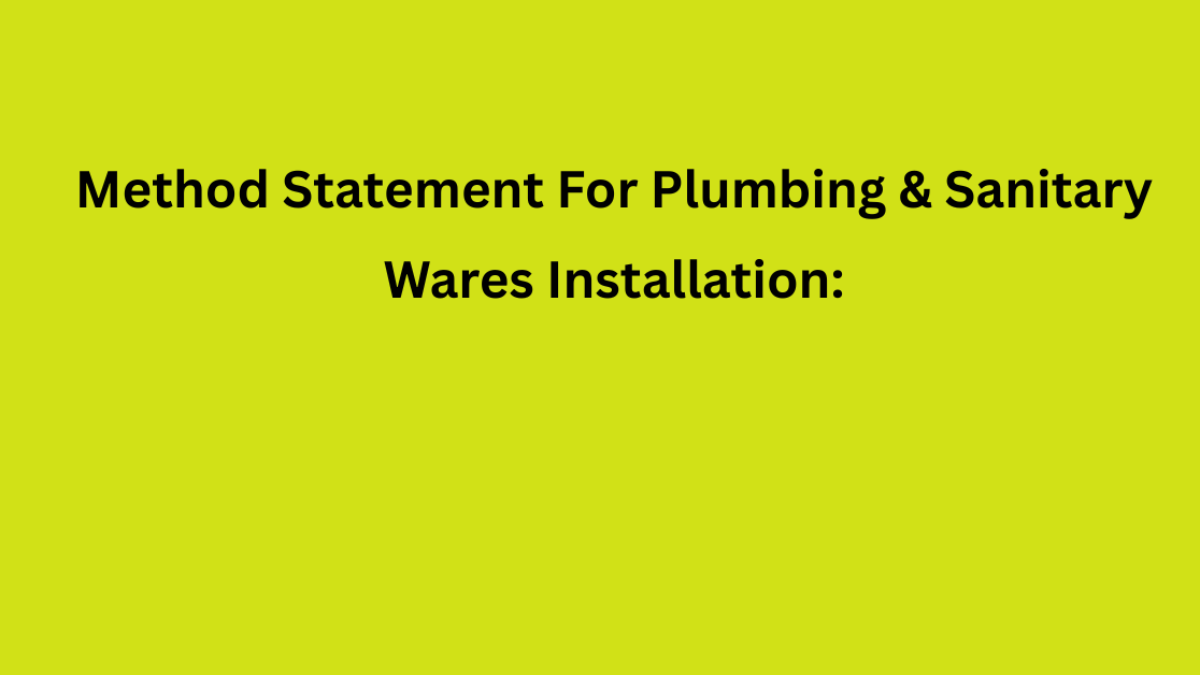1. Purpose of Fire Pump Method Statement
- Define step-by-step procedures for fire pump installation, testing, and commissioning.
- Ensure compliance with contract specifications and approved shop drawings.
- Guarantee reliable operation for all designated areas in the project.
2. Scope of Work
- Covers complete process of:
- Installation of fire pump sets
- Testing procedures
- Commissioning protocols
- Linked with relevant ITP and quality verification steps.
3. Reference Documents
- Approved Fire Fighting System shop drawings
- Project Specifications
- Project Quality Plan (PQP)
4. Key Definitions
- PQP – Project Quality Plan
- PSP – Project Safety Plan
- QA/QC – Quality Assurance/Quality Control
- ITP – Inspection and Test Plan
- WIR – Work Inspection Request
- MIR – Material Inspection Record
5. Responsibilities
5.1 Project Manager
- Ensure timely progress and equipment readiness.
- Oversee safety and quality coordination.
5.2 Construction Manager
- Supervise on-site activities.
- Manage coordination, reporting, and approvals.
5.3 Site Engineer
- Lead installation as per drawings and specs.
- Coordinate with QA/QC and Safety teams.
5.4 QA/QC Engineer
- Monitor installations for quality compliance.
- Handle inspections, WIRs, and MIRs.
5.5 Site Foreman
- Distribute resources and manage day-to-day work.
- Prepare daily reports and ensure safety compliance.
5.6 Safety Officer
- Enforce HSE measures.
- Conduct inspections and ensure PPE use.
5.7 Store Keeper
- Manage storage and delivery of materials.
- Coordinate with QA/QC during material reception.
6. Tools and Equipment Required
- Measuring Tape, Drill Machine, Threading Machine
- Chain Block, Forklift, Spirit Level
- Digital Multimeter, Ammeter, Pressure Gauges
- Safety gear: helmets, gloves, vests, goggles
7. Procedure
7.1 Safety Protocols
- Use trained personnel only.
- Wear proper PPE.
- Provide adequate lighting and area barricades.
- Permit-controlled access.
7.2 Installation Procedure
- Transport pump set to room using forklift.
- Fix anchor bolts, provide vibration pads.
- Connect suction/discharge piping and pressure switches.
- Complete electrical & BMS connections.
- Raise inspection for consultant approval.
7.3 Testing and Commissioning
7.3.1 Pre-Start-Up Inspection
- Visual and mechanical checks
- Secure anchoring and alignment
- Proper piping and valve connections
- Confirm electrical wiring and fluid levels
7.3.2 Operation Sequence
Electric Pump
- Open suction valves
- Check water filling, air release
- Run pump, verify direction, monitor current draw
Diesel Pump
- Check engine parameters: RPM, oil, fuel pressure
- Confirm relief valve settings and noise levels
7.3.3 Flow Testing
Electric & Diesel Pump
- Simulate flow using flow meter valves
- Record pressure and RPM at rated, 150% flow
- Match results with factory test curves
7.3.4 Automatic Operation Setup
- Configure pressure switches:
- Jockey, Electric, Diesel start pressures
- Switch control panels to AUTO mode
7.3.5 Control Panel Functions
- Automatic Mode – Fire pump auto-start based on pressure drop
- Manual Mode – Start via control panel or engine panel
- Emergency Start – Use handle if control circuit fails
8. Attachments
- 8.1: Inspection & Test Plan (ITP)
- 8.2: Installation Checklist
- 8.3: Testing & Commissioning Checklist
- 8.4: Risk Assessment







